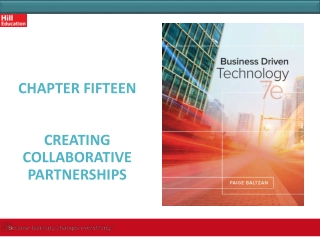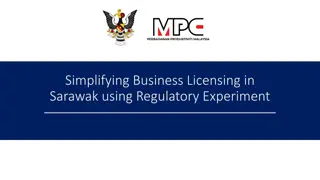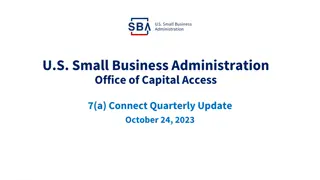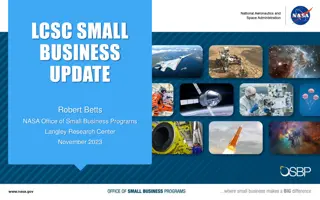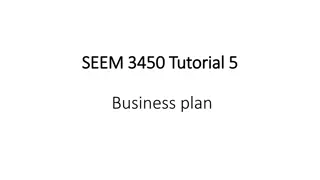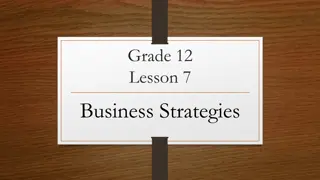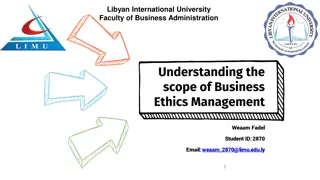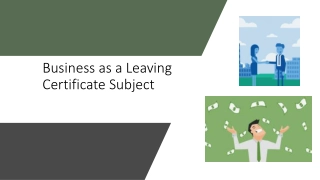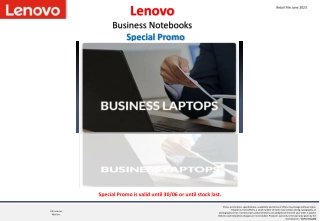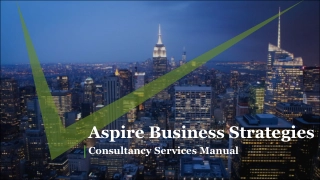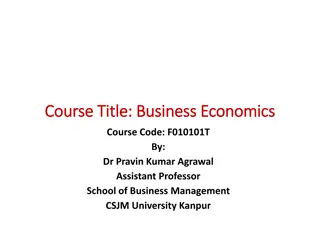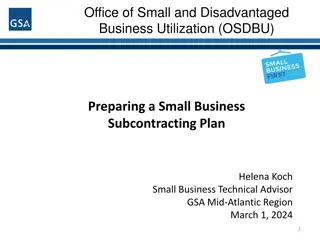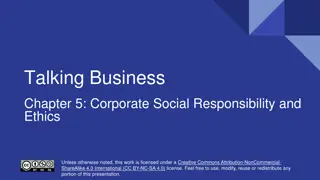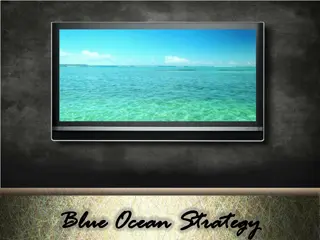E-Business
E-Business, or electronic business, encompasses computer-mediated processes in organizations, including for-profit, governmental, or nonprofit entities. It involves a range of business activities conducted over networks, focusing on production, customer service, and internal management processes. E-business differs from e-commerce by encompassing not only online transactions but also internal business operations enabled through the internet. The development of e-business is driven by market changes, evolving requirements, and legacy structures within organizations. Over the past 30 years, e-business has evolved from a niche solution to a significant player in commercial transactions, with its full potential yet to be realized.
Download Presentation
Please find below an Image/Link to download the presentation.
The content on the website is provided AS IS for your information and personal use only. It may not be sold, licensed, or shared on other websites without obtaining consent from the author. Download presentation by click this link. If you encounter any issues during the download, it is possible that the publisher has removed the file from their server.
Presentation Transcript
E-business Defined E-Business (electronic business) is any process that a business organization computer-mediated organizations include any for-profit, governmental, or nonprofit entity. conducts network. over Business a Their processes include production-, customer-, and internal- or management-focused business processes.
Electronic commerce focuses on the use of information and communication technology to enable the external activities and relationships of the business with individuals, groups, and other businesses, while e-business refers to business with help of the internet. Electronic business differs from electronic commerce as it does not only deal with online transactions of selling and buying of a product and/or service but also enables to conduct of business processes (inbound/outbound operations, marketing and sales, customer service) within the value chain through internal or external networks. logistics, manufacturing & The term "e-business" was coined by IBM's marketing and Internet team in 1996
objectives for e-business Development The organization is facing market changes and the organization changes according to the markets. The objectives for the e-business development emerge from these changes and because the change is continuous, it brings new requirements for the e-business system. In addition, the history and legacy structures of the organization cause conflicts in the development when combined with the need for change. These fluctuating objectives and emerging conflicts bring certain consequences to the e-business system architecture development in the organization. The formation and description of this causal model can be classified as selective coding.. In summary, e-Business has been in the making for the past 30 years.After starting as a niche solution for certain businesses and communities, e- Business today is an expanding force accounting for a steadily increasing share of commercial transactions. Its full potential remains in the future. Now you know how e-Business came to be as important as it is.The next lesson is about the direction in which e-Business moving.
The history of e-commerce: A long and winding road When considering time itself, the history of e-commerce is fairly short, but for most of us, the idea of life without online shopping is virtually inconceivable. From groceries to diamonds to services to Enterprise Level Product Solutions, almost anything you can imagine can be purchased electronically. But where did it all begin,and how far will it go?
The history of e-commerce: 1960s 1980s For beginning just a short while ago, the history of e- commerce is dramatic.In 1969,CompuServe was the first major e-commerce company to be formed in the United States. Although it seems distant now, computer time- sharing services grew from email providers to facilitating tele-shopping in the 1970s. While the rest of us were just beginning to celebrate the wonder of cable television at the beginning of the 1980s, some tech savvy users formed the Boston Computer Exchange, which was a bulletin board system-based marketplace established to facilitate the sale or trade of used computers.This company was a trailblazer in crafting a fully automated, on-line auction and marketplace for general commerce.
For many years, e-commerce existed quietly, but in 1990, the first web browser, aptly named WorldWideWeb, was launched. Around this time, development of the internet kicked into high gear, going from the ability to display basic style sheets to the launch of Amazon and eBay within just a few short years. Needless to say, those two have become smashing successes as they evolved into massive e- commerce platforms, selling and enabling consumers to sell their own wares to others on a global scale, as well as to subscribe to items they need no more going to the store to purchase standard household goods. By the late 1990s,we were all getting too much email, and DVDs began to outpace VHS tapes as the preferred method of viewing films but that didn t last long. In 1997,we saw the launch of Netflix as the world s first online movie rental store. Building their reputation on the model of flat-fee unlimited rentals without due dates, late fees, shipping and handling fees or per-title rental fees, Netflix wittingly upped the customer service game of all would-be online merchants while turning the entertainment industry on its head. Just one year later, Paypal, in its first iteration as Confinity, entered the scene as a tool for transferring money. The company now functions as a bank that executes payment processing for online vendors, auction sites, personal, and commercial users. It s a service that allows their customers to send, receive, and hold funds in 26 currencies worldwide. Today, Paypal Holdings,and its subsidiary,Venmo are two huge names in the digital wallet game.
2nd MBA SEM 2 E BIZ UNDERSTANDING TYPES OF BUSINESS MODELS lecture
Global E-Business retail sales surged 25.7% in 2020 to $4.213 trillion. Five, ten, or even twenty years ago this probably seemed like an impossible number to reach. E-Business has exploded over the last few years and even with the end of the COVID-19 pandemic in sight,isn t expected to slow down. The digital shift is a very real trend and businesses not already online will need to break into the E-Business landscape sooner rather than later. Applying the right E-Business business model to the online store will be one of the first steps. Not taking the time to evaluate your business and understand your target market can be extremely detrimental and lead to thousands in wasted spend. Digital advertising, SEO, and content marketing are effective ways to drive traffic, revenue and help you realize a large ROI, but they won't be nearly as effective without a well-planned E-Business business strategy. Whether you re just starting to explore E-Business models or already have an established digital commerce venture and are looking to expand your online presence, it s important to know which model best fits your needs and requirements
Developing an E - Business strategy is a crucial piece for many organizations. A huge component of this is identifying your target market and understanding what your E - Business business model will be And thus let us First of all understand Types of Business Models
Types of Business Models Electronic commerce, or E-Business, is a business model that lets businesses and consumers make purchases or sell things online. There are six major E-Business business models: Business to Consumer (B2C) Business to Business (B2B) Business to Government (B2G) Business to Business to Consumer (B2B2C) Consumer to Consumer (C2C) Consumer to Business (C2B) 1. 2. 3. 4. 5. 6. We ll review each of these six business classifications in depth and dig into the five primary delivery models that you will need to consider when launching or expanding your online store.
















